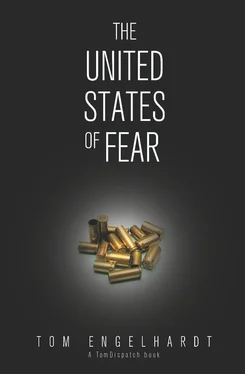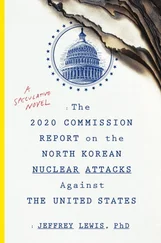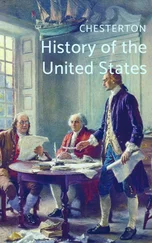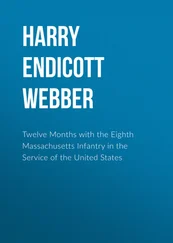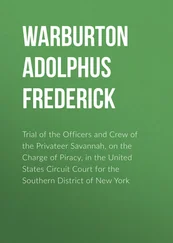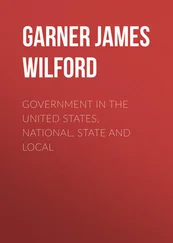—Howard Zinn
“TomDispatch is essential reading. It is a one-stop shop where you can find the most provocative thinkers writing the most eloquent and hard-hitting articles about the most pressing issues of the day. Read, get mad, and take action.”
—Amy Goodman
Introduction
AMERICAN WARSCAPES
When you look at me, you can’t mistake the fact that I’m of a certain age. But just for a moment, think of me as ten years old. You could even say that I celebrated my ninth birthday recently, without cake, candles, presents, or certainly joy.
I’ve had two mobilized moments in my life. The first was in the Vietnam War years; the second, the one that leaves me as a ten-year-old, began on the morning of September 11, 2001. I turned on the TV while doing my morning exercises, saw a smoking hole in a World Trade Center tower, and thought that, as in 1945 when a B-25 slammed into the Empire State Building, a terrible accident had happened.
Later, after the drums of war had begun to beat, after the first headlines had screamed their World War II–style messages (“The Pearl Harbor of the 21st Century”), I had another thought. And for a reasonably politically sophisticated guy, my second response was at least as off-base as the first. I thought that this horrific event taking place in my hometown might open Americans up to the pain of the world. No such luck, of course.
If you had told me then that we would henceforth be in a state of eternal war, as well as living in a permanent war state, that, to face a ragtag enemy of a few thousand stateless terrorists, the national security establishment in Washington would pump itself up to levels not faintly reached when facing the Soviet Union—a major power with thousands of nuclear weapons and an enormous military—that “homeland”—a distinctly un-American word—would land in our vocabulary never to leave, and that a second Defense Department dubbed the Department of Homeland Security would be set up not to be dismantled in my lifetime, that torture (excuse me, “enhanced interrogation techniques”) would become as American as apple pie and that some of those “techniques” would actually be demonstrated to leading Bush administration officials inside the White House, that we would pour money into the Pentagon at ever-escalating levels even after the economy crashed in 2008, that we would be fighting two potentially trillion-dollar-plus wars without end in two distant lands, that we would spend untold billions constructing hundreds of military bases in those same lands, that the CIA would be conducting the first drone air war in history over a country we were officially not at war with, that most of us would live in a remarkable state of detachment from all of this, and finally—only, by the way, because I’m cutting this list arbitrarily short—that I would spend my time writing incessantly about “the American way of war” and produce a book with that title, I would have thought you were nuts.
But every bit of that happened, making clear that, like human beings everywhere, I have no special knack for peering into the future. If it were otherwise, I would undoubtedly now be zipping through fabulous spired cities with a jetpack on my back (as I was assured would happen in my distant youth). But if prediction isn’t our forte, then adaptability to changing circumstances may be—as my trajectory for the past ten years proves.
A decade ago, in response to the bizarre spectacle of this nation going to war while living at peace, even if in a spasmodic state of collective national fear, I did something I hardly understood at the time. I launched a nameless listserv of collected articles and my own expanding commentary that ran against the common wisdom of that October moment when our second Afghan War was just beginning. A little more than a year later, thanks to the Nation Institute, it became a website with the name TomDispatch.com. And because our leaders swore we were “a nation at war,” because we were in fact killing people in quantity in distant lands, because the power of the state at home was being strengthened in startling ways, while everything still open about our society seemed to be shutting down, even as the military was being pumped up to Schwarzeneggerian dimensions, I started writing about war.
At some level, I can’t tell you how ridiculous that was. After all, I’m the most civilian and peaceable of guys. I’ve never even been in the military. I was, however, upset with the Bush administration, the connect-no-dots media coverage of that moment, and the repeated 9/11 rites that proclaimed us the planet’s greatest victim, survivor, and dominator, leaving only one role, greatest Evildoer, open for the rest of the planet (and you know who auditioned for, and won, that part hands down).
Things That Go Boom in the Night
I won’t say, however, that I had no expertise whatsoever with a permanent state of war and a permanent war state, only that the expertise I had was available to anyone who had lived through the post–World War II era. I was reminded of this on a recent glorious Sunday when, from the foot of Manhattan, I set out, for the first time in more than half a century, on a brief ferry ride that proved, for me, as effective a time machine as anything H. G. Wells had ever imagined. That ferry was not, of course, taking me to a future civilization at the edge of time, but to Governor’s Island, now a park and national monument in the eddying waters of New York harbor and to the rubble of a gas station my father, a World War II veteran, ran there in the early 1950s when the island was still a major U.S. Army base.
On many mornings in those years, I accompanied him on that short ride across the East River and found myself amid buzzing jeeps and drilling soldiers in a world of army kids with, among other wonders, access to giant swimming pools and kiddie-matinee Westerns. As a dyed-in-the-wool city boy, it was my only real exposure to the suburbs, and it proved an edenic one that also caught something of the exotically militarized mood of that Korean War moment.
As on that island, as for most Americans then, the worlds of the warrior and of abundance were no more antithetical than they were to the corporate executives, university research scientists, and military officers using a rising military budget and the fear of communism to create a new national security economy. An alliance between big industry, big science, and the military had been forged during World War II that blurred the boundaries between the military and the civilian by fusing together a double set of desires: for technological breakthroughs leading to ever more efficient weapons of destruction and to ever easier living. The arms race—the race, that is, for future “good wars”—and the race for the good life were being put on the same “war” footing.
In the 1950s, a military Keynesianism was already driving the U.S. economy toward a consumerism in which desire for the ever larger car and missile, electric range and tank, television console and submarine were wedded in single corporate entities. The companies producing the large objects for the American home—General Electric, General Motors, and Westinghouse, among others—were also major contractors developing the big-ticket weapons systems ushering the Pentagon into its own age of abundance.
More than half a century later, the Pentagon is still living a life of abundance—despite one less-than-victorious, less-then-good war after another—while we, increasingly, are not. In the years in between, the developing national security state of my childhood just kept growing, and in the process the country militarized in the strangest of ways.
Читать дальше
